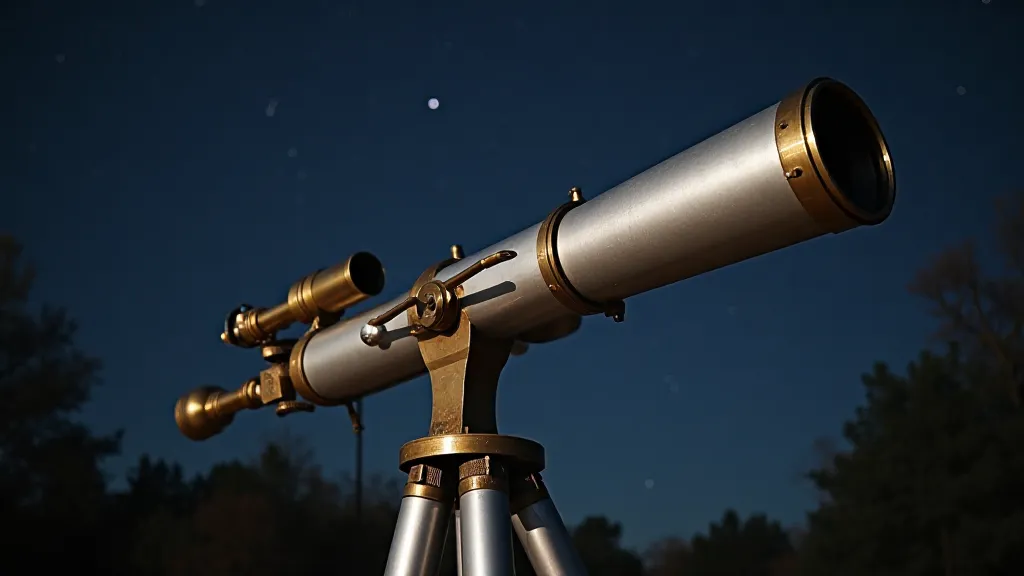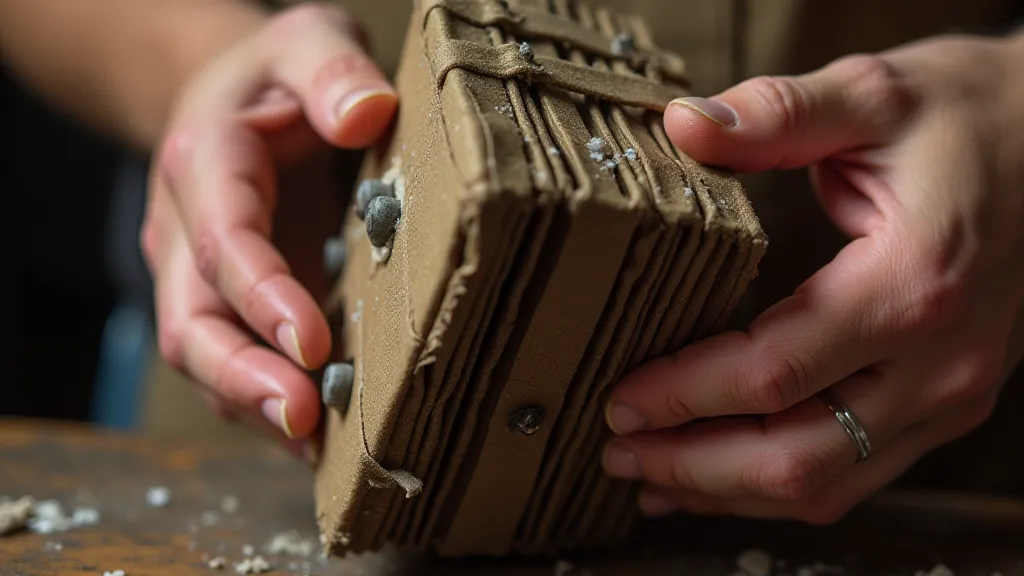Lunar Cartography: Tracing the Shadows of Time on the Moon's Face
There's a quiet poetry to antique accordions. The bellows, like slumbering lungs, hold the echoes of countless melodies, of dances long past. Their wooden frames, often intricately carved, bear the patina of age, a testament to the craftsman’s skill and the instrument’s enduring spirit. It's a similar reverence, a profound sense of connection to the past, that I find when turning my telescope toward the Moon. The lunar surface isn’t just rock and dust; it’s a vast, ancient canvas etched with the chronicles of cosmic collisions, volcanic eruptions, and the patient sculpting of time. And just as an accordion’s sound is richer for its history, so too is the Moon's visual complexity deepened by understanding its geological past.
My first glimpse of the Moon, through a small, department store refractor, was underwhelming. It looked… grey. Uniform. But as I grew, and as my equipment (and understanding) improved, the sheer depth and nuance of the lunar landscape began to reveal itself. It's a journey of discovery, a constant refinement of observation, much like restoring an accordion – each detail scrutinized, each repair undertaken with respect for the original craftsmanship.

Different Telescopes, Different Views: A Beginner's Guide
Choosing the right telescope is the first step in any astronomical journey. It dramatically influences your observing experience. It’s akin to choosing different lenses for a camera – each offering a unique perspective. Just as a seasoned accordion restorer carefully selects tools for each task, an astronomer must choose equipment suited to the desired level of detail and portability. For those just starting, it can be a daunting choice. Let's explore some common telescope types and how they perform when turned towards our celestial neighbor.
Refractors: The Classic Choice and Optical Precision
Refractor telescopes, with their long, slender tubes and lens-based optics, hold a nostalgic charm. They were the workhorses of early astronomy, and even today, well-made refractors offer a crisp, high-contrast view. For lunar observing, a good quality refractor excels at revealing subtle albedo differences – those variations in brightness across the lunar surface. Craters like Tycho and Copernicus, with their prominent ray systems, practically leap off the page under a refractor’s gaze. However, refractors can suffer from chromatic aberration, a slight blurring around bright objects, especially in lower-end models. Apochromatic refractors, which use specialized glass to eliminate this aberration, are a significant investment but offer truly stunning views. The intricacies of lens grinding and polishing are a testament to optical engineering, much like the craftsmanship involved in building a high-quality accordion.
Reflectors: Aperture is King – Understanding Light Gathering
Newtonian reflectors, with their large mirrors and secondary diagonal mirror, offer a massive advantage: aperture. Aperture is the single most important factor in a telescope's light-gathering ability, and more light means more detail. A 6-inch Newtonian will show you significantly more than a 60mm refractor. The lunar surface, with its intricate crater patterns and subtle terrain features, truly shines under the gaze of a larger reflector. The “shadow line” – the line of contact between the terminator (the line separating day and night on the Moon) – is a treasure trove of detail in a reflector. Every bump and ridge along the terminator's edge becomes visible. It’s tempting to simply buy the largest reflector possible, but a balance must be struck. For the budget-conscious enthusiast, carefully considering your options, much like choosing the right bellows for an accordion repair, is essential. The journey from observing with the naked eye to uncovering the universe’s secrets is often incremental; learning to appreciate the subtle differences in aperture and its impact can be a profound shift in perception. Sometimes, the best way to grasp the importance of aperture is to understand the wider scope of astronomical observation – a journey often starting with Beyond the Naked Eye: A Gradual Ascent to Cosmic Revelation. Ultimately, understanding the principles of light gathering is vital to successful observation. If you're exploring options for your first telescope, perhaps reading about Schmidt-Cassegrains: The Architect's Compromise Between Aperture and Portability would be a helpful next step.
Catadioptrics: The Versatile Option – Balancing Portability and Performance
Catadioptric telescopes, such as Schmidt-Cassegrain and Maksutov-Cassegrain designs, combine lenses and mirrors to create compact, versatile instruments. They offer a good balance of aperture, portability, and image quality. They’re often a good choice for those with limited space or who want a telescope that can be easily transported. Their longer focal ratios (focal length divided by aperture) provide excellent detail and contrast, making them well-suited for lunar observing, particularly for high-magnification views. They are a relatively modern design, much like the advancements in accordion manufacturing – continually improving with each iteration. The ability to pack a powerful optical system into a small package is a triumph of engineering.

Detailing the Lunar Landscape: A Cartographer’s Eye and The Allure of Planetary Portraits
Lunar cartography – the mapping of the Moon – is a demanding but rewarding pursuit. It requires patience, a keen eye, and a deep understanding of lunar geology. Observing the Moon isn’t simply about seeing craters; it’s about understanding their formation, their age, and their relationship to the surrounding terrain. Maria, the dark, smooth plains visible on the lunar surface, are vast lava flows that filled in ancient impact basins. Rilles – sinuous channels etched into the lunar crust – are thought to be collapsed lava tubes or tectonic features. Tracing these features, noting their characteristics, and comparing them to geological maps is an exercise in both observation and deduction. It’s a pursuit that draws parallels to meticulously documenting the restoration process of an antique instrument, capturing every detail for posterity. The meticulousness required in lunar cartography echoes the wider appreciation of uncovering the universe's most subtle secrets. For those drawn to the precision of lunar mapping, the broader field of astronomical observation offers further avenues for exploration; understanding how light interacts with celestial bodies is fundamental, and perhaps a deeper understanding might be gained from The Silent Echoes: Unveiling the Universe's Oldest Light Through Reflectors.
A particularly fascinating detail to observe are the “shadow lines” within craters. The angle of the sunlight drastically alters the appearance of these shadows, revealing intricate details that are otherwise hidden. On a clear, steady night, you can almost feel the weight of geological time pressing down on you as you trace the contours of these ancient formations. The dedication required to capture these intricacies leads one to ponder the broader spectrum of celestial observation. Those drawn to lunar cartography might also find fulfillment in exploring Planetary Portraits: Unveiling the Whispers of Atmosphere with High-Power Telescopes, delving into the secrets of other worlds.
Restoration and Appreciation: A Shared Philosophy and The Architect’s Compromise
There's a shared philosophy between restoring antique accordions and observing the Moon through a telescope. Both require a reverence for the past, an appreciation for craftsmanship, and a commitment to preserving history. Just as an accordion’s value isn’t solely determined by its monetary worth but also by its story, so too is the Moon's beauty enhanced by understanding its geological past. The act of observing, of carefully sketching what you see, is a form of preservation in itself. Understanding the mechanics of achieving a perfect balance between design and functionality, portability and capability, often requires a nuanced appreciation for the principles involved. Much like an architect grapples with the compromises inherent in their designs, so too does the astronomer strive for optimal performance within the constraints of their equipment.
Whether you're meticulously replacing a cracked key on an accordion or carefully adjusting the collimation of a reflector, the goal is the same: to bring a piece of history back to life, to allow it to speak its story. It’s a process of continual refinement, of finding the best compromise between functionality and aesthetics. This pursuit mirrors how an architect makes decisions, finding Schmidt-Cassegrains: The Architect's Compromise Between Aperture and Portability. It's a rewarding endeavor, a connection to the past that transcends mere observation – it's a conversation across time.

The Moon awaits. A canvas of shadows, etched by time, ready to reveal its secrets to those who take the time to look. But if you feel overwhelmed by the options, remember that every journey, whether it’s restoring a piece of musical history or exploring the vastness of space, starts with a single step. The complexities involved in astronomical observation, like the intricacies of crafting a fine instrument, can seem daunting at first. Ultimately, a deeper understanding of the interplay between light, optics, and celestial bodies often unlocks a profound sense of wonder and appreciation for the universe we inhabit.





